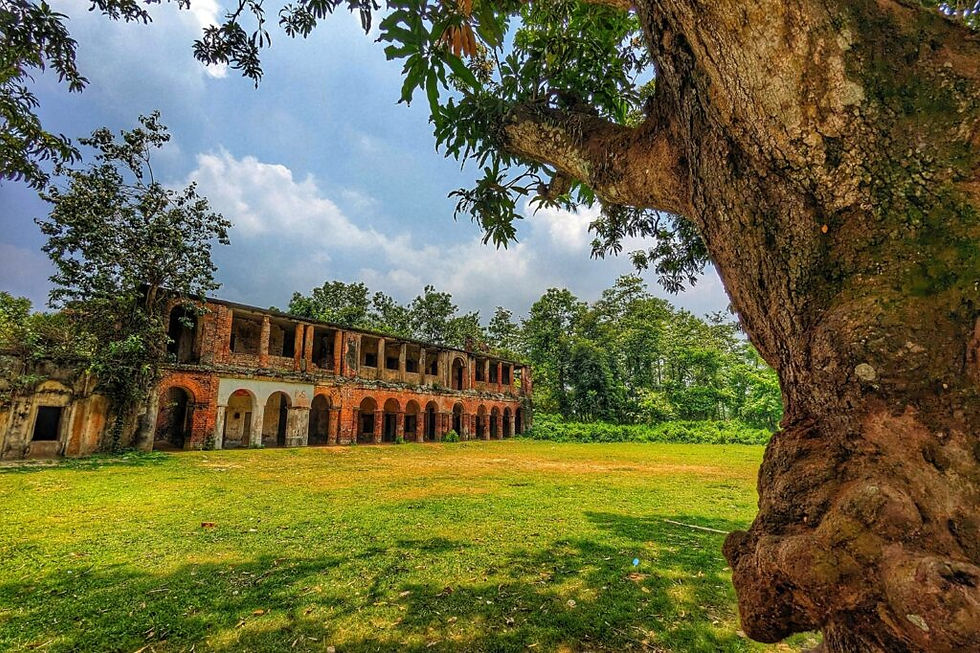The Seven Dome Mosque: A Witness to Mughal Grandeur in Dhaka
- Niharika Momtaz

- 11 minutes ago
- 3 min read

The Seven Dome Mosque or Sat Gumbad Masjid is, besides being an extraordinary piece of Mughal design art, indicative of the spirit of devotion. Dated during the late Mughal era, the mosque is positioned on the outskirts of Dhaka in Mohammadpur Suburb. Apart from representing the merging of art and architecture during the Bengal Mughal era, the mosque has survived the tests of time. Even to this day, it is an object of fascination for many historians, architects, and tourists around the globe.
Background
It is believed that the mosque was built during the Mughal Aurangzeb's reign. Considering this was a marriage of many constructions during that time, it is believed that the mosque was built around the year 1680 A.D. Many historians believe that it was the Governor Shaista Khan who commissioned the construction during his reign as the Subahdar or governor of Bengal.
The time period was one in which Dhaka was a prosperous provincial capital of the Mughal Empire, full of mosques, gardens, courtyard inns, and palaces. And the Seven Dome Mosque was one of the largest religious sites of the time, appropriately animated with the Mughal love for decorative opulence, yet hinting at the local style.
Architecture of Seven Dome Mosque
The mosque, along with the name, Seven Dome Mosque, has seven domes—three of which crown the central prayer hall and are large, while the other four are smaller and positioned at the cada towers. This configuration is one of a kind and has since become an iconic characteristic of the mosque, which has separated it from the other Mughal mosques in Bengal. The central dome is the largest, a little larger in comparison with the rest, and it is the center of focus of the major axis, which adds to the mosque's harmony.
The rectangular mosque is outlined in plan and has a prayer hall with three arches on the eastern side. Each arch has stucco ornamental decorations with floral and calligraphic designs, which are representative of the Mughal period. The western side of the hall has three beautifully designed prayer niches, each aligned with an entrance, displaying lovely terracotta and plaster work along with the entrance. The small domes are topped by the four octagonal corner towers (minarets), which soar elegantly from each corner. These towers add vertical rhythm to the mosque and act as visual balance to its horizontal extension. The design elegantly integrates Islamic, Persian, and Bengali architectural styles, which is a true testament to the blending of cultures.
The Surrounding Complex
Sat Gumbad is more than just the mosque. To the East is an old water tank (dighi), which was used for ablutions. Graves and tombs, which are thought to be of the Shaista Khan family and other Mughal officials, are scattered around the mosque. The Mughal concept of joined sacred and funerary spaces is reflected in these designs.
The greenery and stillness around the mosque are a stark contrast to busy Dhaka and the perfect place for photography and stillness.
Having stood the test of time, the Seven Dome Mosque has become a monumental treasure, combining remnants of Mughal architecture with a regional flair. The Seven Dome Mosque is also a piece of art within itself. Said architecture, for its time, was very advanced, as the builders incorporated motifs from the local styles into the symmetry admired during the Mughal Dynasty, particularly with the heavens. It's something that has withstood erosion caused by pollution, as well as the wear and tear of nature and time itself.
To this very moment, the mosque is preserved for the archeological departments, and its well-maintenance is a testament to the builder's skill. With time, the complex has become more than just an artistic structure; it has become a piece of living history that captures the passion, elegance, and Mughal influence on the culture during that time. It is something that paints Dhaka in a very positive and clear light.
With its age, the Seven Doe Mosque is an architectural masterpiece that has also become a part of the heritage felt during the Mughal rule. It is like a link from the historical part of Dhaka to its modern counterpart, displaying passion, artistry, and strength that resonates from within. The Seven Mosque is something that heavily invokes heritage and history, especially with the seven domes layered in sunlight.




Comments